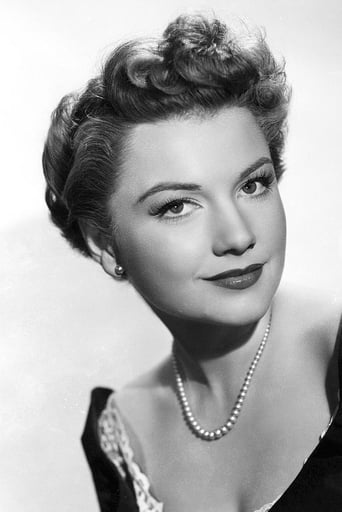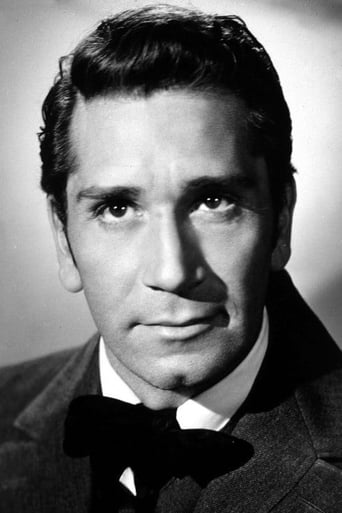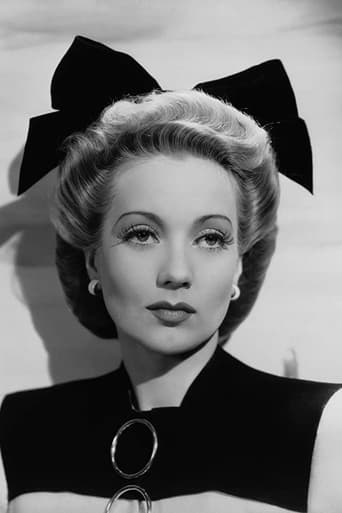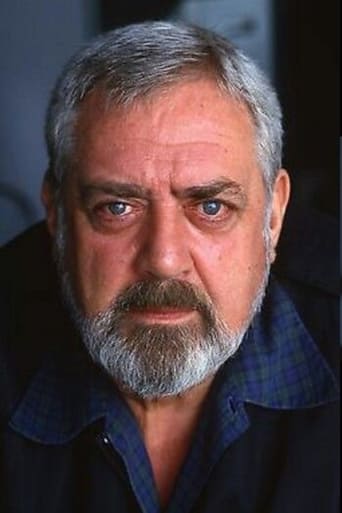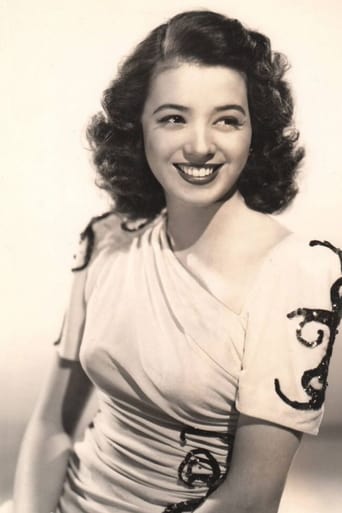GamerTab
That was an excellent one.
Portia Hilton
Blistering performances.
Anoushka Slater
While it doesn't offer any answers, it both thrills and makes you think.
Marva-nova
Amazing worth wacthing. So good. Biased but well made with many good points.
dougdoepke
The first part is rather cute. Sothern, Baxter, and Donnell play off one another really well as three girl buddies living together. Of course, viewers like me also have to get used to Raymond Burr as a lover-boy. After so many years as a movie heavy and TV's Perry Mason that takes some getting used to. But the lighter part ends when Burr turns up dead and Baxter thinks she did it. At that point, things turn more mysterious and psychological.Baxter is easy to look at as she assumes the central role of conflicted woman. More importantly, Baxter the actress wisely avoids her sometimes tendency to over-emote. But the movie's remainder is only mildly suspenseful as Baxter tries to deal with her supposed guilt. Did she really bonk Burr on the head with a poker since she was too drunk to know. And who can she turn to for help. Newspaperman Conte appears helpful, but maybe he's just interested in a big story. And what about Superman's George Reeves as a detective with a moustache, no less.There are some interesting visuals as one might expect from an artist like director Lang. Nonetheless, the overall result could have been helmed by a dozen lesser directors than the maker of Metropolis (1927) and Woman in the Window (1944). All in all, the movie's an interesting time-passer. But for fans of the German director like myself, it's nothing special.
Cristianos
Based on a short story written by Vera Caspary (who also wrote "Laura", which was adapted into a highly acclaimed film noir by Otto Preminger), this film-noir flavored melodrama tells the story of Norah Larkin (Anne Baxter), who works as a switchboard operator, lives in a Los Angeles apartment with her roommates, Crystal Carpenter (Ann Sothern) and Sally Ellis (Jeff Donnell). On her birthday, after her friends have gone out, Norah celebrates herself with a candlelight dinner beside the picture of his beloved fiancée, a soldier serving in the Korean War. She finally reads the awaited letter only to discover he is engaged with a Japanese nurse. Emotionally distraught, Norah accepts a blind date with Harry Prebble (Raymond Burr) over the phone at the Blue Gardenia restaurant. There, Norah consumes six strong Polynesian Pearl Divers cocktails becoming terribly drunk when she arrives at Harry's studio apartment. After Harry attempts to sedate her with coffee, he makes a sexual advance on her, and is knocked unconscious when Norah strikes him with a fire iron in self-defense and flees.The next morning, she suffers a blackout, as well as discovers Harry is dead. Naming the murder case "The Blue Gardenia Murderess" by newspaper columnist Casey Mayo (Richard Conte), Norah tries to remember the details of her ill-fated night, and must team up with newspaper man to help solve the mystery.The cast is remarkably well in their parts. Anne Baxter puts on a convincing emotionally afflicted and vulnerable performance, and holds my attention throughout the picture. Raymond Burr (well-known for playing Perry Mason) with his size, height, and strength, leads to the fact that he is physically powerful over the women he attempts to womanize. Playing the hard-boiled detective character, Richard Conte adds a bit of romance to the gloomy story. Relegated into supporting stock character territory, Ann Sothern almost overcomes it with snappy wisecracks, and being a more straightforward, matured woman opposite to Jeff Donnell's Sally Ellis who loves pulp fiction and quite quirky. Although for a cameo, Nat King Cole sings the haunting title song with his absorbing soft baritone voice.Establishing the noir atmosphere, the picture is helped by some intriguing touches by cinematographer Nicholas Musuraca. Examples of this is the ominous rain drops on the apartment window at the time of the murder, the breaking of the mirror glass when Norah strikes Harry, and the fog firmly establish the characters' troubled state of mind. Other examples are full close-up shots in times of accusation and figures emerging from the mysterious dark at the wrong time help create suspension. This is without mention the use of low-key neon lights, deep focus photography, and deep shadows especially in the scene with Mayo invites Norah over to his newspaper office.However, it falls short with the story and its styles. The film starts out light-hearted and promising, though it falls into a weak ending with an arbitrary plot twist you may not see coming. The movie ends too quick with it, and doesn't develop it any further than a personal confession leaving the ending contrived and slightly rushed. In addition to this, the story of an unconscious bystander who is framed in a murder has become quite clichéd since the film's initial release, and this picture follows the usual by-the-number plot points.The theme of newspaper sensationalism, which this movie is critiquing, is explored quite well within the time frame of the movie and director Fritz Lang followed upon on it in "While the City Sleeps" and "Beyond a Reasonable Doubt" (both released three years later) making this film an installment of a "newspaper noir" trilogy. Given this film is set in the 1950s, there's a bit of a McCarthyism aspect in this film with Norah serving as the suspected Communist with the police on their trail by the day definitely creates a sense of a paranoia, melancholy atmosphere.In the end, this is an enjoyable solid murder mystery with well-rounded performances to boot along with Lang's direction and Musuraca's cinematography making up for a slightly flawed script.
seymourblack-1
"The Blue Gardenia" is a low budget thriller in which two young women (who are both named after flowers), two letters and two rather slimy bachelors, all have a significant impact on what transpires. At the centre of the story is a young woman who, as a result of making an unwise decision at a particularly vulnerable time, finds herself propelled into a nightmare. Unfortunately, the only avenue of escape open to her is very risky and requires her to put her trust in someone of whom she's uncertain.Based on a short story by Vera Caspary (who also wrote "Laura", which was made into a successful movie by Otto Preminger), this melodrama about the events surrounding a murder, soon develops from its light-hearted beginning into something far darker and more tense.Norah Larkin (Ann Baxter) is a telephone operator who shares an L.A. apartment with two of her friends from work. On her birthday, after the wisecracking Crystal Carpenter (Ann Southern) and the pulp-fiction loving Sally Ellis (Jeff Donell) have gone out, Norah spends the evening alone with a glass of champagne and a letter from her boyfriend who's a soldier in Korea. Shortly after reading the letter that informs her that she's been dumped, the telephone rings and Harry Prebble (Raymond Burr), under the misapprehension that she's Crystal, asks her out for dinner. In her confused and emotional state, Norah decides to accept the invitation and meets Harry at "The Blue Gardenia" nightclub.Harry's a predatory womaniser who gets Norah drunk on cocktails and takes her home to his apartment where he tries to force himself on her. In her panic, Norah grabs a poker and swings it over her head before hitting Harry as hard as she can. Next morning, when she wakes up, she can't remember what happened on the previous night. A little later, when she learns that Harry's been murdered, she becomes convinced that she's killed him and that some items (a lacy hanky, a blue gardenia and a pair of shoes) that she left behind at his apartment will quickly make her the prime suspect.Casey Mayo (Richard Conte) is a high profile newspaper columnist who takes an interest in the case and publishes an open letter entitled "Letter To An Unknown Murderess". In his letter, he invites the murderess (who he calls "The Blue Gardenia") to give his newspaper her exclusive story in return for top class legal representation which the newspaper will arrange. Norah, who is living in a constant state of fear, recognises that this seems to offer the best way forward but is also anxious about whether the columnist's offer is sincere or whether it's simply a ploy to get a sensational story for his newspaper.A clue to the mystery about what happened on the night of Harry's murder is given early on in the film but this, in no way, detracts from the absorbing nature of the story or the enjoyment which is further enhanced by the inclusion of Nat "King" Cole's performance of the title song and Nicholas Musuraca's marvellous cinematography. The scene in which Norah goes to Casey Mayo's office late at night is a real high point with its use of deep shadows, deep focus and neon lights etc. Interestingly, this was the first of three movies that Fritz Lang made relating to newspapers (the others being "While The City Sleeps" and "Beyond A Reasonable Doubt").
lastliberal
It is fascinating to see Raymond Burr (Ironside, Perry Mason) as a lounge lizard trying to pick up every women he sees. We see him working on the Oscar-nominated Ann Sothern (The Whales of August) in the opening, but she was having none of his charm.Director Fritz Lang and writers Vera Caspary (Laura) and Charles Hoffman (The Green Hornet, "Batman") give us an enjoyable film that has noirish elements, but is lighthearted at the same time.Just seeing and hearing Nat King Cole singing the title song is worth the time spent here.Crystal (Sothern) gets herself into trouble and turns to newspaperman Casey Mayo (Richard Conte). She needs help before Superman, I mean Police Capt. Haynes (George Reeves) finds her.
